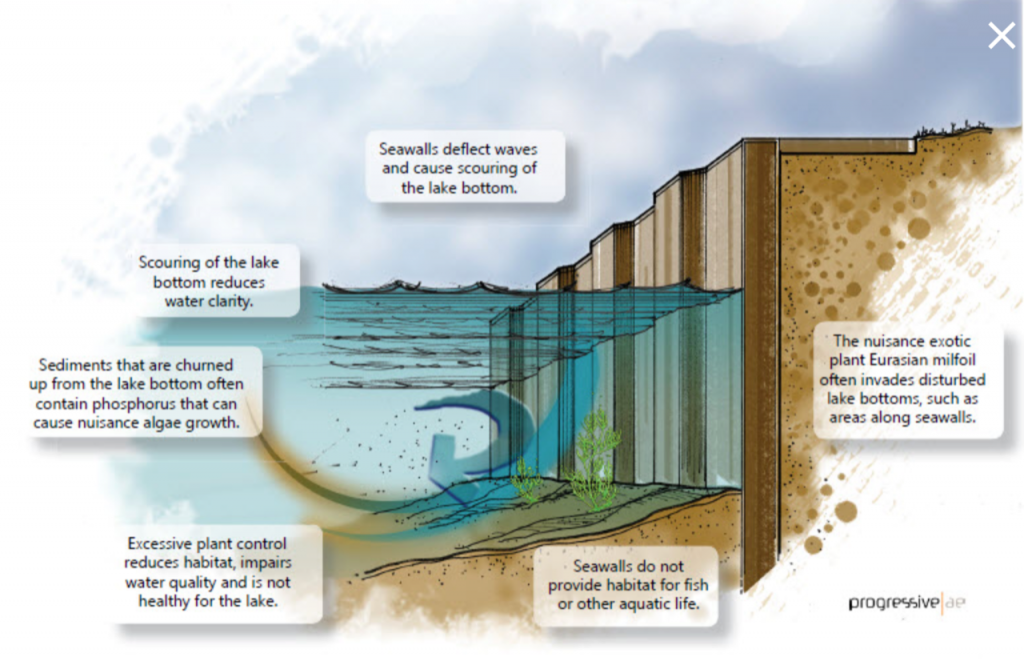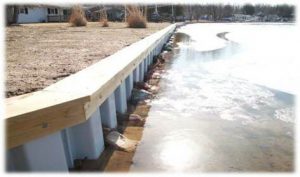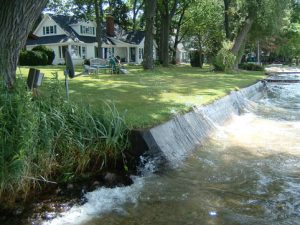
The 2017 GLA shoreline survey revealed that Glen Lake had a total of 18 engineered seawalls (made of wood, steel, or concrete), with seven seawalls located on Little Glen and 11 on Big Glen.
A subsequent 2019 shoreline survey showed a reduction in numbers; Glen Lake had a total of 15 engineered seawalls – a reduction of three. Four were on Little Glen and 11 were on Big Glen. In 2019, we had six wooden seawalls, six steel seawalls, and three made with concrete.
Why the reduction in seawalls? One reason they did not increase is because they are very expensive. Second, when installed, the wave energy is transferred to the neighboring shore, causing unwanted erosion on that shore.
The average size of an engineered seawall is 100 feet long, resulting in a total of 1,500 feet of shoreline with these man-made structures. Glen Lake has a total of 17 miles of shoreline and less than 2% of our shoreline has engineered seawalls.

GLA acknowledges that installing an engineered seawall may be warranted in extreme and unusual situations. Typically, engineered seawalls are used on the Great Lakes where erosion forces are more intense and destructive. Smaller inland lakes typically have much less erosion forces and may utilize rocks or coir logs as the better “lake friendly” choice for erosion protection.
GLA is encouraged by the news that there has been a reduction of seawalls on Glen Lake. It is a step in the right direction to protecting our watershed from further erosion problems.
 If you wish to remove your engineered seawall with an appropriate erosion control strategy, please contact the GLA at glenlakeassociation@gmail.com for guidance or call 231-334-7645.
If you wish to remove your engineered seawall with an appropriate erosion control strategy, please contact the GLA at glenlakeassociation@gmail.com for guidance or call 231-334-7645.
It should be noted that all shoreline alterations require a permit from the Michigan Department of Environment, Great Lakes, and Energy (EGLE), formerly the Michigan Department of Environmental Quality.
For more information about the negative impact of seawalls on water quality for inland lakes, click here.
Recent Comments